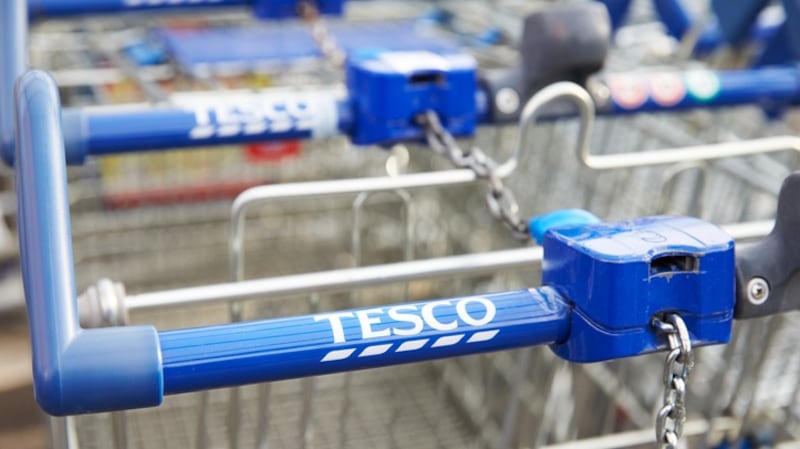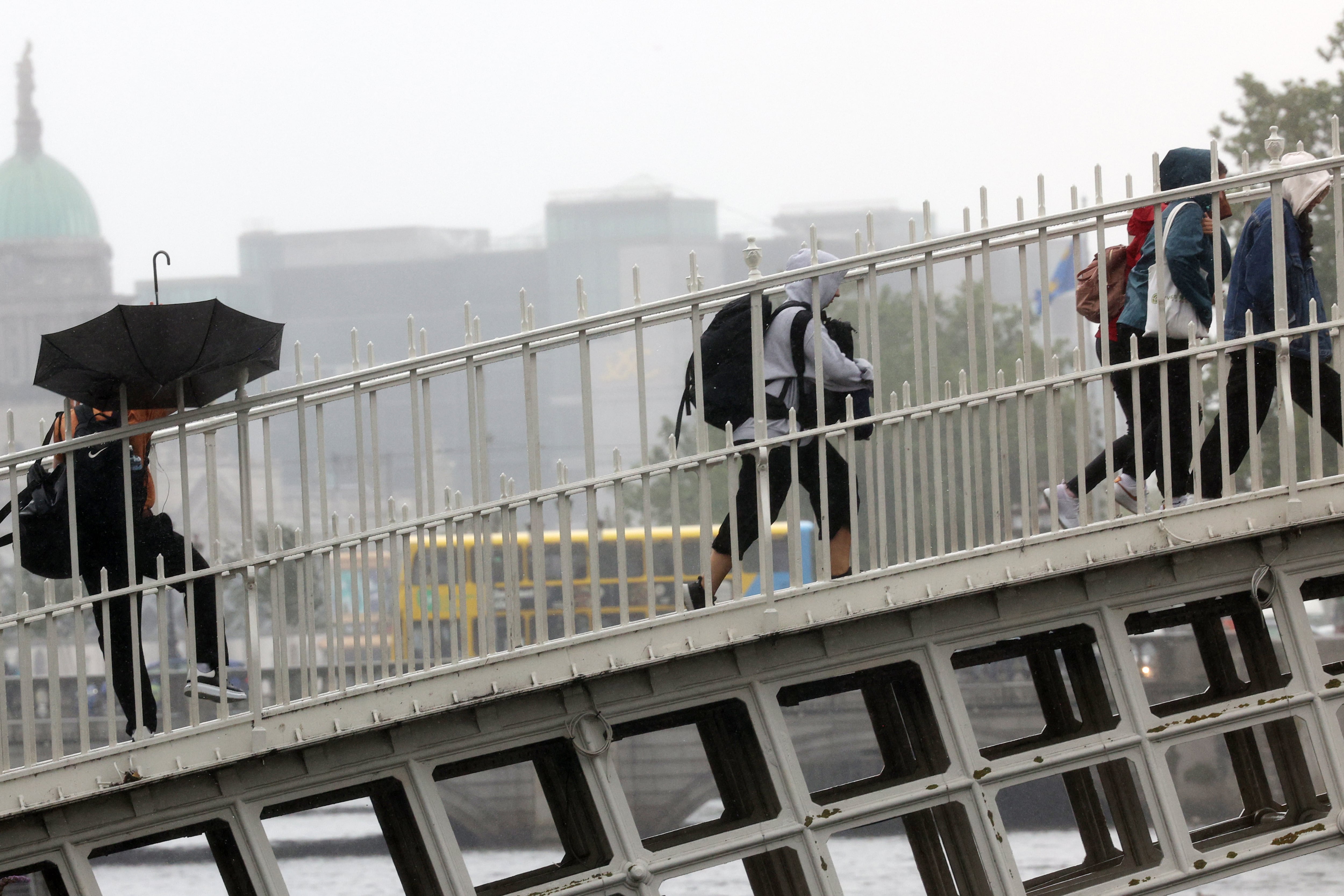Few, if any, of the price spikes that marked the cost-of-living crisis, are likely to be reversed but, barring any future shocks, Irish consumers’ wallets might not be hit as hard in 2024 as they were in 2023.
Inflation
In the last meeting of the European Central Bank (ECB) board before Christmas, its governor Christine Lagarde warned against making assumptions about where inflation is heading. She pointed out that geopolitical tensions could see prices climb higher, as they did in the aftermath of Russia’s invasion of Ukraine in early 2022. She also pointed to uncertainty created by the climate crisis and noted that more extreme weather hitting harvests could see inflation head in the wrong direction.
But such caveats aside, inflation does appear to be on a downward curve in Ireland having dropped to 3.9 per cent in November from 5.1 per cent the month before. It was the first time since September 2021 that it fell below 5 per cent. A similar trend has been noted across the euro zone, with the smart money betting on rates staying comparatively low as 2024 continues.
Borrowings
After a dark year for tens of thousands of borrowers, there is an expectation 2024 will be better with the ECB likely to cut rates from as early as March, although possibly not until the summer. That is not to say things will revert to where they were in early 2022, however, with rates unlikely to fall by more than one percentage point.
READ MORE
Tracker mortgage holders who were paying little more than 1 per cent for a decade are set to pay over 4 per cent for the foreseeable, while tens of thousands of people coming off low fixed rates in the 12 months ahead are likely to see their repayment costs climb dramatically.
Tax relief worth up to €1,250 will take the sting out of the hikes for many who paid more in 2023 than they did a year earlier but there is no sign of relief for those yet to feel the pain.
Savings

The vast majority of Irish savers have missed out on annual returns of in excess of €3 billion because they have money on deposit in instant access accounts that offer negligible rates of interest. While the average rate for overnight deposits has climbed in recent weeks, it stands at 0.12 per cent while savings accounts with an agreed maturity date have an average rate of return of 2.59 per cent, some distance off the euro zone average of 3.27 per cent.
The good news is that things could be turning. Savers can get rates of 4 per cent from Raisin and Trade Republic, which assist Irish people in lodging cash with more banks across the EU offering more generous rates on savings, while Dutch online bank Bunq started offering an on-demand rate of 2.46 per cent. The Irish banks, while slow to move, announced deposit rate increases in the second half of 2023 with rates of up to 3 per cent for fixed-term deposits on the table. There is potential for these rates to increase
Health insurance
As in many sectors, when one health insurance provider increases its prices the others tend to follow shortly afterwards. That is why the announcement from Irish Life shortly before Christmas of a price hike averaging 4.8 per cent should be considered bad news for more than 1.5 million people who have private health insurance with the two other providers in the market, VHI Healthcare and Laya Healthcare.
A series of price increases rolled out by all three providers in 2023 is likely to be compounded by more hikes early in the new year, with the cumulative impact taking the cost of policies for many Irish families up by well in excess of €500 a year. The providers blame soaring medical inflation and greater demand in the post-pandemic period for much of the increase, and things are unlikely to change on that score any time soon.
[ Health insurance: How to save up to €1,000 a year on your planOpens in new window ]
Car insurance
As 2023 ended, it emerged that motor insurance claims costs rose by almost 25 per cent last year to €751 million due to a spike in damage costs and inflation. Despite that, the cost of premiums over the same period fell by 7 per cent. That is unlikely to continue and the cost of motor insurance could climb for many over the course of 2024.
Fuel prices

The price of motor fuel has fallen in recent weeks, with the cost of a litre of petrol down from €1.80 in November to a little below €1.70 now, with diesel prices going in much the same direction. What happens on Irish forecourts next depends on global markets. The situation in the Middle East is volatile to say the least, and the weather for what is left of the winter will determine what happens to oil prices, with a cold snap likely to drive up demand and, as a result, prices.
Utilities
The cost of gas and electricity more than doubled for most households during the cost of living crisis but since the autumn things have been looking brighter. All the main suppliers reduced their prices by between around 10 per cent and 30 per cent, with SSE Airtricity announcing a second price reduction, of 11.5 per cent on its gas and 12.8 per cent on its electricity, shortly before Christmas. The other suppliers are likely to follow suit in the days ahead.
A further price decrease should be anticipated later in 2024, presuming wholesale prices remain close to where they are now or fall further. That could see prices fall by another 15 per cent. However, even three decreases will still leave consumers paying substantially more to heat and light their homes next year when compared with 2021.
[ Are cheaper energy prices finally on the way for Irish consumers?Opens in new window ]
Food

Figures from Kantar Worldpanel put inflation in Irish supermarkets at close to 17 per cent in the middle of 2023 but pressures eased as the year continued and are likely to ease further over the course of 2024, although the era of cheap food appears to be behind us. Food is 20 per cent dearer than two years ago, with some staples costing even more than that.
Lower input costs now should translate into lower prices in the summer of 2024 but higher wage costs will put more pressure on retailers. In a best-case scenario, Irish consumers can expect to see the cost of the shopping climb by around 3 per cent in 2024 when compared with 2023, which will add at least €300 on to households costs.
- Sign up for push alerts and have the best news, analysis and comment delivered directly to your phone
- Find The Irish Times on WhatsApp and stay up to date
- Our In The News podcast is now published daily – Find the latest episode here




















